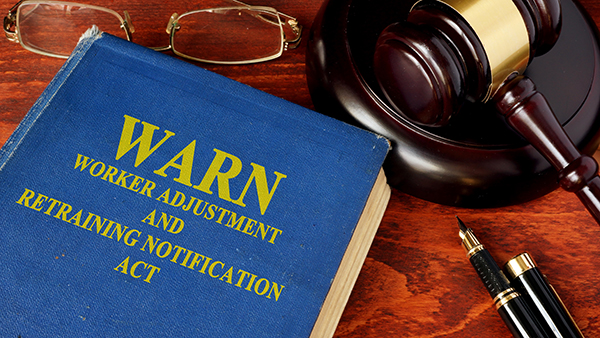
By Anthony Kaylin, courtesy of SBAM Approved Partner ASE
In today’s current environment, many organizations have either furloughed or temporarily laid off their employees. Does the WARN Act apply to these situations? In 1988 Congress passed the Worker Adjustment and Retraining Notification (WARN) Act to provide workers with enough time to prepare for the transition between the jobs they currently hold and new jobs.
The WARN Act applies to employers who have 100 or more employees (excluding part-time workers), or 100 or more employees including part-time workers who on the aggregate work at least 4,000 hours per week exclusive of overtime. Workers on temporary layoff or on leave with a reasonable expectation of recall are counted as employees.
The WARN Act requires employers to provide written notice at least 60 calendar days in advance of covered plant closings and mass layoffs. A mass layoff is defined as a reduction of force that does not result from a plant closing. It results in a single-site employment loss of 50-499 employees during any 30-day period if they represent at least 33% of the total active workforce – excluding part-time employees.
When the pandemic hit and many employers were covered by shelter-in-place orders, a number of covered employers temporarily laid off employees, which would have triggered the threshold, without giving appropriate notice. Courts in Michigan (Federal 6th Circuit Court of Appeals, Illinois (Federal 7th Circuit Court of Appeals) and New York (Federal 2nd Circuit Court of Appeals) have ruled that temporary layoffs of up to six months do not trigger the WARN Act. Other circuits say they may (8th Circuit Court of Appeals), but it depends on the specific facts on whether the parties knew whether the layoffs would be permanent at the time.
Yet many covered employers who received a Paycheck Protection Program Loan (PPPL) are required to bring back employees for the term of the loan for it to be eligible for loan forgiveness. If a covered employer will be unable to reopen because of continuing financial conditions or on-going government-ordered shutdowns after spending its eight weeks of federal funding, the question then is whether it must give WARN-compliant notice to employees at the time of re-hire or before? It will depend on intent and knowledge at the time.
What will be a controlling factor in the courts is how the layoff letter was drafted. In a recent 7th Circuit Case (Leeper v. Hamilton County Coal, LLC, No. 19-1109 (7th Circuit Court of Appeals, 9/26/20), the court ruled that the WARN Act’s 60-day notice requirement was not triggered because the employer informed employees that they “may return,” and a significant portion of the employees did, in fact, return to work within six months of the communication.
State laws may intervene as well. State laws may have lower employer and layoff thresholds and longer notice periods. For example, in New York, an employer with 50 countable employees can trigger NY WARN with as few as 25 countable employment losses at a single site of employment whether temporary or permanent.
Michigan follows the federal law. Therefore, a Michigan WARN Notice is required if the following occurs:
-
A facility closure with an employment loss of 50 or more employees during any 30-day period
-
A layoff resulting in an employment loss of 500 or more employees or 50-499 employees if they make up at least 33% of the employer’s workforce
-
A facility closure or mass layoff reaching the employment loss threshold during any 90-day period
The Notice then has to be provided to the affected workers or their representatives (e.g., a labor union), the State of Michigan’s Department of Labor and Economic Opportunity – Workforce Development, and the appropriate unit of local government.
The takeaway for covered Michigan Employers is to consult with their employment counsel to ensure the proper notice, if required, is provided to all required parties, especially if initial temporary layoffs become permanent. COVID-19 may change how courts look at layoffs. This is especially true if covered employers are now looking to right-size their business operations given the new market conditions.